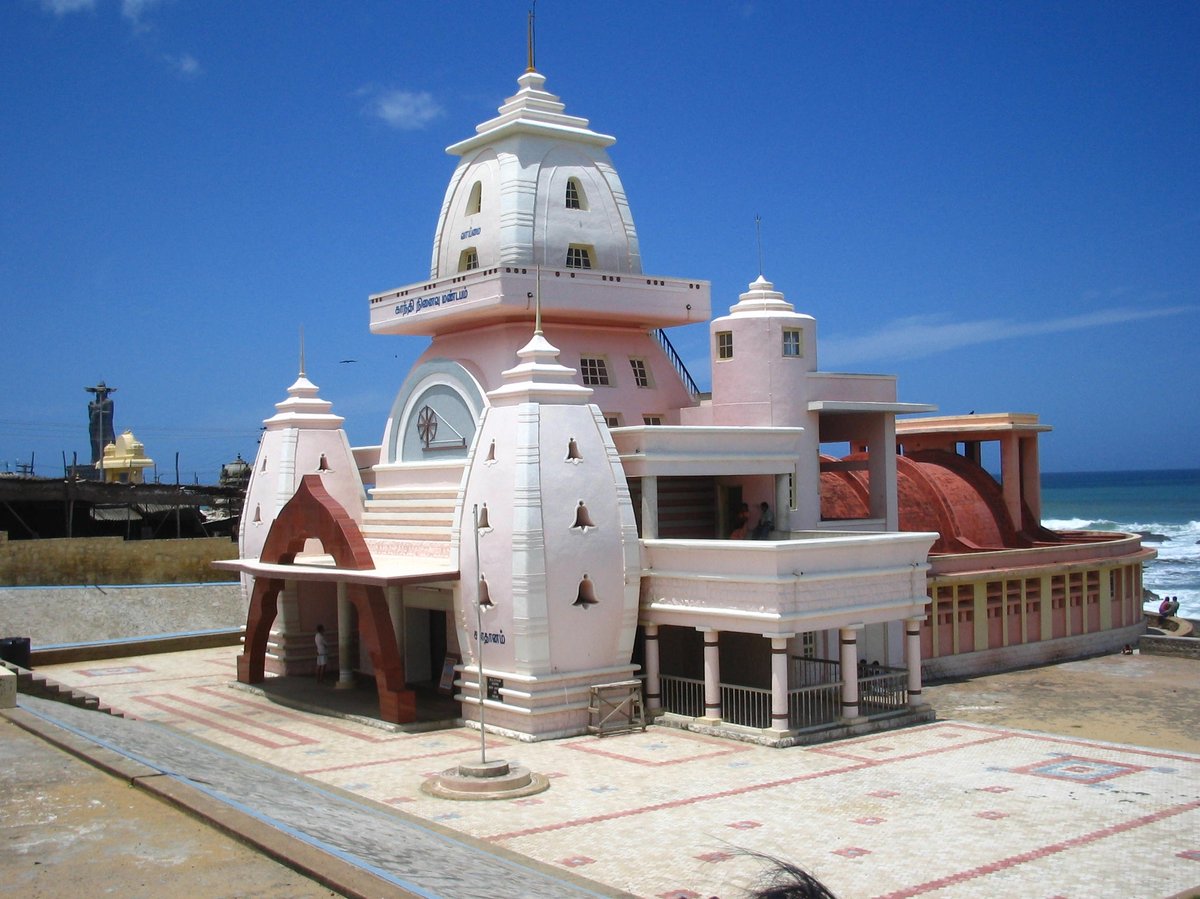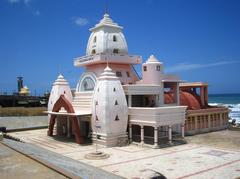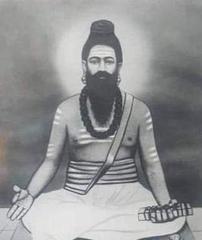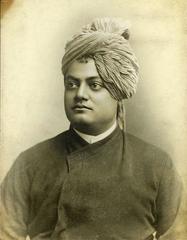
Comprehensive Guide to Visiting Gandhi Memorial, Kanyakumari, India
Date: 19/07/2024
Introduction
The Gandhi Memorial in Kanyakumari, India, stands as a poignant tribute to Mahatma Gandhi, the father of the Indian nation. This memorial is not merely an architectural marvel but also a symbol of Gandhi’s enduring legacy and his profound impact on India’s history and cultural identity. Constructed in 1956, eight years after Gandhi’s assassination, the memorial commemorates the immersion of Gandhi’s ashes in the confluence of the Indian Ocean, the Bay of Bengal, and the Arabian Sea. This act of immersion symbolizes Gandhi’s deep connection to the land and his belief in unity and national integration (source).
Designed by the renowned architect V. Ganapati Sthapati, who is also credited with the famous Valluvar Kottam in Chennai, the memorial is a unique blend of modern and traditional Indian architectural styles. The structure, built in the shape of a temple, features a 79-foot-high tower symbolizing the age at which Gandhi was assassinated. This design element, along with the use of pink sandstone and various symbolic features, makes the memorial a place of reflection, peace, and reverence (source).
Visitors to the Gandhi Memorial can expect a serene and enriching experience, with the site serving not only as a historical landmark but also as an educational center. The memorial houses inscriptions of Gandhi’s quotes and teachings, a statue in a meditative pose, and various elements representing religious harmony. It is a focal point for cultural activities and educational programs that propagate Gandhi’s teachings of non-violence, truth, and social justice. This guide aims to provide comprehensive information on visiting the Gandhi Memorial, including historical insights, architectural details, visitor tips, and nearby attractions, ensuring a well-rounded and fulfilling visit.
Table of Contents
Historical Background
The Gandhi Memorial in Kanyakumari, India, stands as a testament to the enduring legacy of Mahatma Gandhi, the father of the Indian nation. The memorial was constructed to honor Gandhi’s visit to Kanyakumari in 1937 and to commemorate the immersion of his ashes in the confluence of the Indian Ocean, the Bay of Bengal, and the Arabian Sea in 1948. This act symbolized Gandhi’s deep connection to the land and his belief in the unity of India.
The memorial was inaugurated in 1956, eight years after Gandhi’s assassination, and has since become a significant pilgrimage site for those who revere his contributions to India’s independence and his philosophy of non-violence and truth. The site is not only a place of historical importance but also a symbol of national unity and peace.
Architectural Design
The architectural design of the Gandhi Memorial is a blend of modern and traditional Indian styles, reflecting the simplicity and grandeur associated with Gandhi’s life and ideals.
Structure and Layout
The memorial is built in the shape of a temple, which is a nod to the traditional Dravidian architectural style prevalent in South India. The central structure is a 79-foot-high tower, symbolizing the age at which Gandhi was assassinated. The tower is designed to allow sunlight to fall directly on the exact spot where Gandhi’s ashes were kept for public viewing, every year on October 2nd, his birthday. This unique feature adds a spiritual dimension to the memorial, making it a place of reflection and reverence.
The building is constructed using pink sandstone, which is both aesthetically pleasing and durable. The use of this material is significant as it is commonly found in many historical structures across India, thus linking the memorial to the broader architectural heritage of the country.
Symbolic Elements
The Gandhi Memorial incorporates several symbolic elements that reflect Gandhi’s life and philosophy. The central hall of the memorial houses a statue of Gandhi in a meditative pose, symbolizing his commitment to peace and non-violence. The walls of the hall are adorned with inscriptions of Gandhi’s quotes and teachings, serving as a source of inspiration for visitors.
The design also includes elements that represent the three major religions of India—Hinduism, Islam, and Christianity—highlighting Gandhi’s belief in religious harmony and unity. The memorial’s layout is such that it forms a cross when viewed from above, symbolizing the universal message of love and sacrifice that Gandhi preached.
Cultural and Historical Significance
The Gandhi Memorial is not just an architectural marvel but also a cultural and historical landmark. It serves as a reminder of Gandhi’s contributions to India’s freedom struggle and his enduring legacy. The memorial attracts thousands of visitors each year, including tourists, scholars, and devotees, who come to pay their respects and learn about Gandhi’s life and teachings.
Educational and Inspirational Role
The memorial plays an important educational role by providing visitors with insights into Gandhi’s philosophy and the history of India’s independence movement. The inscriptions and exhibits within the memorial offer a comprehensive overview of Gandhi’s life, his struggles, and his achievements. This makes the memorial a valuable resource for students, researchers, and anyone interested in learning about India’s history and Gandhi’s role in shaping it.
National Unity and Peace
The Gandhi Memorial stands as a symbol of national unity and peace, reflecting Gandhi’s vision of a harmonious and inclusive India. The memorial’s design and the events held there, such as prayer meetings and commemorative ceremonies, promote the values of non-violence, tolerance, and mutual respect. These values are particularly relevant in today’s world, where conflicts and divisions often threaten social harmony.
Visitor Experience
Visiting the Gandhi Memorial is a profound and enriching experience. The serene atmosphere and the spiritual ambiance of the memorial provide a space for reflection and contemplation. The memorial is open to visitors throughout the year, and entry is free, making it accessible to people from all walks of life.
Location
- Location - The Gandhi Memorial is located in Kanyakumari, the southernmost tip of India. It is easily accessible by road, rail, and air, with the nearest airport being Trivandrum International Airport, approximately 90 kilometers away.
Timings
- Timings - The memorial is open from 7:00 AM to 7:00 PM every day.
Best Time to Visit
- Best Time to Visit - The best time to visit Kanyakumari is between October and March, when the weather is pleasant and conducive to sightseeing.
Visitor Tips
- Footwear - Visitors are required to remove their footwear before entering the memorial, as it is considered a place of reverence.
- Photography - Photography is allowed, but visitors are advised to be respectful and avoid using flash inside the memorial.
- Guided Tours - Guided tours are available and highly recommended for those who wish to gain a deeper understanding of the memorial’s history and significance.
Tickets
- Entry Fees - Entry to the Gandhi Memorial is free of charge.
Nearby Attractions
- Vivekananda Rock Memorial - Located just offshore, this is another significant site in Kanyakumari, dedicated to Swami Vivekananda. (source)
- Thiruvalluvar Statue - A towering statue of the famous Tamil poet and philosopher, located near the Gandhi Memorial.
- Kanyakumari Beach - Known for its stunning sunrise and sunset views, this beach is a must-visit for tourists.
FAQs
-
What are the visiting hours of Gandhi Memorial?
- The memorial is open from 7:00 AM to 7:00 PM every day.
-
Is there an entry fee to visit the Gandhi Memorial?
- No, entry to the memorial is free of charge.
-
What is the best time to visit Kanyakumari?
- The best time to visit is between October and March.
-
How can I reach the Gandhi Memorial?
- The memorial is easily accessible by road, rail, and air, with the nearest airport being Trivandrum International Airport, approximately 90 kilometers away.
Conclusion
The Gandhi Memorial in Kanyakumari is more than just a historical monument; it is a testament to the enduring legacy of Mahatma Gandhi and his profound influence on India’s journey to independence. The memorial’s unique architectural design, symbolic elements, and serene ambiance make it a place of reflection and reverence, attracting thousands of visitors each year. Whether you are a tourist, a scholar, or a peace activist, a visit to the Gandhi Memorial offers an opportunity to connect with Gandhi’s ideals of non-violence, truth, and unity (source).
In addition to its historical and cultural significance, the memorial serves as an educational hub, providing valuable insights into Gandhi’s life and philosophy. The various exhibits, inscriptions, and guided tours available at the site ensure that visitors leave with a deeper understanding of Gandhi’s contributions to India’s freedom struggle and his vision for a harmonious society. The nearby attractions, such as the Vivekananda Rock Memorial and Thiruvalluvar Statue, further enrich the visitor experience, making Kanyakumari a must-visit destination for anyone interested in India’s rich cultural heritage.
By preserving and promoting Gandhi’s teachings, the memorial plays a crucial role in fostering a sense of national unity and peace. It stands as a beacon of hope and inspiration, reminding us of the power of non-violence and the importance of striving for social justice in today’s world. Whether you are planning a visit or simply wish to learn more about this iconic site, the Gandhi Memorial in Kanyakumari offers a profound and enlightening experience that resonates with Gandhi’s timeless message (source).
References
- Visiting Gandhi Memorial in Kanyakumari - History, Tickets, and Tips (source)
- Discover the Gandhi Memorial in Kanyakumari - Visiting Hours, Tickets, and Historical Significance (source)
- Visitor Tips and Practical Information for Gandhi Memorial in Kanyakumari - Visiting Hours, Tickets, and Nearby Attractions (source)



